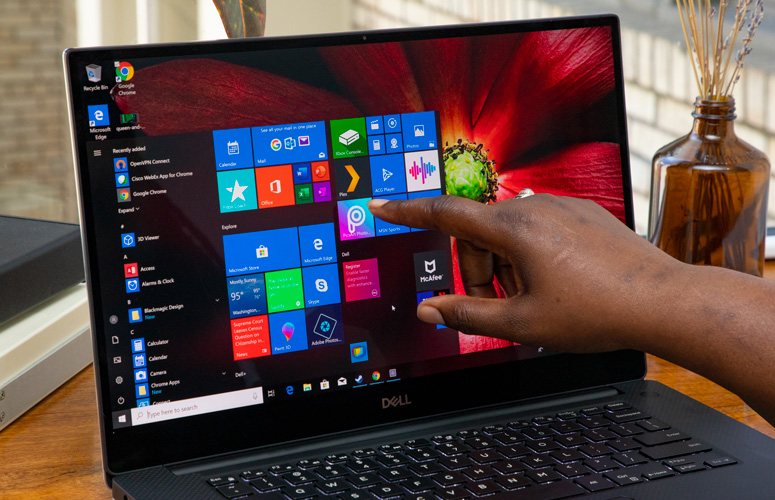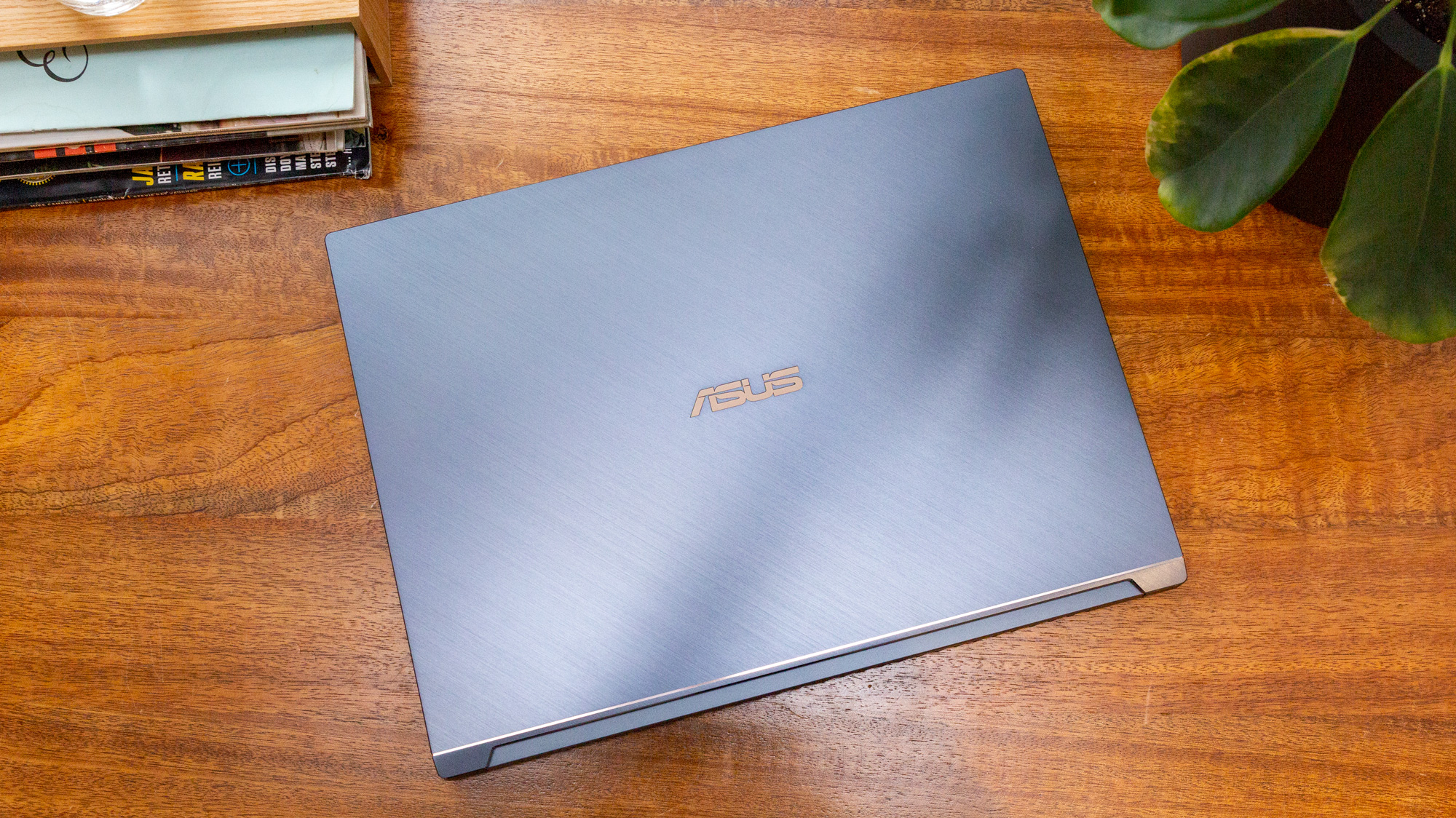Asus ProArt StudioBook Pro vs. Dell XPS 15: Which laptop wins?
Power-hungry titans fight!

Asus' recently launched ProArt StudioBook Pro is currently one of the best workstations around. But how does that stack up against one of the best laptops that boasts a similarly intense performance, like the Dell XPS 15?
The XPS 15 (starting at $1,099; configured at $2,649) is much cheaper and offers more battery life, but the StudioBook Pro (starting at $1,999; configured at $2,999) boasts workstation-level graphics and a stunning design.
Here's how these premium laptops stack up.
Asus ProArt StudioBook Pro vs. Dell XPS 15: Specs compared
| Header Cell - Column 0 | Asus ProArt StudioBook Pro | Dell XPS 15 |
|---|---|---|
| Starting price (as configured) | $1,999 ($2,999) | $1,099 ($2,649) |
| Display | 17-inch, 1920 x 1200 | 15.6 inches, 3840 x 2160 |
| CPU | Intel Xeon E-2276M | Intel Core i9-9980HK |
| RAM | 32GB | 32GB |
| Graphics | Nvidia Quadro RTX 3000 | Nvidia GeForce GTX 1650 |
| SSD | 2TB SSD | 1TB SSD |
| Ports | One Thunderbolt 3, HDMI 2.0, three USB 3.1, SD card slot, headphone jack, security lock slot | One Thunderbolt 3, HDMI 2.0, two USB 3.1, SD card slot, headphone jack, security lock slot |
| Colors | Turquoise Gray | Silver |
| Size | 15 x 11.3 x 0.7 inches | 14.1 x 9.3 x 0.5~0.7 inches |
| Weight | 5.4 pounds | 4.5 pounds |
Design
The Asus ProArt StudioBook Pro and the Dell XPS 15 both sport sleek aluminum designs. But while the XPS 15 features a simple silver hood, the StudioBook Pro wows with its tantalizing Turquoise Gray lid paired with gold accents. The StudioBook Pro also has a neat cutout on the lid, giving it a bit of pizzazz.

The XPS 15's interior features a black carbon-fiber deck and superthin bezels on the display. Meanwhile, the StudioBook Pro's deck is split between a rigid and matte surface by a thin gold accent. And the bezels on the display are as thin as the XPS 15's.

However, at 4.5 pounds and 14.1 x 9.3 x 0.5~0.7 inches, the XPS 15 is much lighter and just slightly thinner than the StudioBook Pro, which comes in at 5.4 pounds and 15 x 11.3 x 0.7 inches. But that's to be expected, since the StudioBook Pro is a 17-inch laptop.
Although the XPS 15 has a premium aesthetic, its design has grown tired, while the StudioBook Pro looks fresh and lively.
Sign up to receive The Snapshot, a free special dispatch from Laptop Mag, in your inbox.
Winner: Asus ProArt StudioBook Pro
Ports
The Asus ProArt StudioBook Pro and the Dell XPS 15 both pack a decent number of ports, so it was a tight race. Both machines sport one Thunderbolt 3 port, an HDMI 2.0 port, two USB 3.1 ports, an SD card slot, a headphone jack and a security lock slot. But the StudioBook Pro features an additional USB 3.1 port, giving it the win.
Winner: Asus ProArt StudioBook Pro
Display
The Asus ProArt StudioBook Pro and the Dell XPS 15's displays couldn't be more different. The StudioBook Pro has a 17-inch, 1920 x 1200, 16:10 display, while the XPS 15 sports a 15.6-inch, 3840 x 2160 OLED, 16:9 screen.

When a player character started blasting a flamethrower in the trailer for Free Guy, the bright orange flame glowed vividly on the XPS 15's panel, but it was comparatively dull on the StudioBook Pro. After Ryan Reynolds drives his motorcycle out of a window, the night sky had more contrast on the XPS 15's screen than on the StudioBook Pro's. The XPS 15's 4K reigned supreme on details as the stubble on Reynolds' face was sharper.

The XPS 15's display clocked in 239% of the sRGB color gamut, which is much more vivid than the StudioBook Pro's 162%.
And at 626 nits of brightness, the XPS 15 outshines the StudioBook Pro's 292-nit screen.
Winner: Dell XPS 15
Keyboard and touchpad
Both the Asus ProArt StudioBook Pro and the Dell XPS 15's keyboards are a little on the shallow side, but ultimately, the StudioBook Pro's keys have more give and felt more comfortable to type on.

On the StudioBook Pro's keyboard, I hit 76 words per minute on the 10fastfingers.com typing test, whereas I got only 71 wpm on the XPS 15's keyboard. I managed to type faster on the StudioBook Pro because the keys felt more hefty. Despite that, I think the palm rests for the XPS 15 were more comfortable.

The StudioBook Pro's touchpad (4.2 x 2.9 inches) and the XPS 15's touchpad (4.1 x 3.1 inches) are about the same size, and they both were soft to the touch. The StudioBook Pro also has a digital numpad embedded in the touchpad, which is a neat addition.
Winner: Asus ProArt StudioBook Pro
Performance and graphics
The Asus ProArt StudioBook Pro packs an Intel Xeon E-2276M processor and 32GB of RAM, while the Dell XPS 15 boasts the same amount of RAM but swaps to an Intel Core i9-9980HK CPU.

On the Geekbench 4.1 overall performance benchmark, the XPS 15 scored 28,882, flying above the ProArt StudioBook Pro's 21,359.
The XPS 15 killed it again on the HandBrake test, taking only 8 minutes to transcode a 4K video to 1080p, while the StudioBook Pro took 10 minutes and 30 seconds.

Asus' 2TB SSD copied 4.97GB of data in just 4 seconds, translating to 1,272 megabytes per second, which speeds past the XPS 15'’s 1TB SSD (508 MBps).
The StudioBook Pro's Nvidia Quadro RTX 3000 GPU with 6GB of VRAM blasted through the 3DMark Ice Storm Unlimited benchmark with a score of 186,292, easily surpassing the XPS 15's GTX 1650 GPU (177,158).
On a real-world benchmark, the StudioBook Pro nailed 177 frames per second on the Dirt 3 benchmark, which soars over the XPS 15's 80-fps average.
Winner: Draw
Battery life
The Dell XPS 15 killed it on the Laptop Mag battery test, lasting 8 hours and 7 minutes despite its 4K OLED panel. And even though the Asus ProArt StudioBook Pro's display clocks in at a lower resolution, its battery lasted only 6 hours and 23 minutes.
Winner: Dell XPS 15
Value and configurations
While both machines can get ridiculously expensive, only the Dell XPS 15 reaches an approachable price point, while the Asus ProArt StudioBook Pro never leaves its stratospheric price.

The XPS 15 starts at $1,149 and comes with an Intel Core i5-9300H CPU, 8GB of RAM, a 256GB SSD, an Intel UHD Graphics 630 GPU and a 1920 x 1080 display. The base model of the ProArt StudioBook Pro runs $1,999 and starts at an Intel Core i7-9750H CPU, 16GB of RAM and a 1TB SSD.

The $1,649 iteration of the XPS 15 bumps it up to an Intel Core i7-9750H CPU, 16GB of RAM and an Nvidia GeForce GTX 1650 GPU with 4GB of VRAM. Meanwhile, the $2,649 XPS 15 that we tested has an Intel Core i9-9980HK processor with 32GB of RAM, a 1TB SSD and a 4K OLED display.
The only other configuration for the StudioBook Pro is the one I tested, which costs a meaty $2,999 and comes with an Intel Xeon E-2276M processor, an Nvidia Quadro RTX 3000 with 6GB of VRAM, 32GB of RAM and a 2TB SSD. Unfortunately, there's no 4K model.
Between the amount of configurations and the low starting price, the XPS 15 easily takes the round.
Winner: Dell XPS 15
| Header Cell - Column 0 | Asus ProArt StudioBook Pro | Dell XPS 15 |
|---|---|---|
| Design (10) | 10 | 8 |
| Ports (10) | 8 | 7 |
| Display (15) | 13 | 15 |
| Keyboard and touchpad (15) | 13 | 11 |
| Performance and graphics (20) | 18 | 18 |
| Battery life (20) | 14 | 17 |
| Value and configs (10) | 4 | 7 |
| Overall (100) | 80 | 83 |
Bottom line
The Dell XPS 15 takes it away with its display, battery life and value, making it the better overall laptop. If you’re looking for workstation-level performance, the XPS 15's CPU will serve you well.
However, the Asus ProArt StudioBook Pro's RTX GPU can't be beat, and its design, keyboard and ports are superior. If you need a machine that can handle heavy productivity like video editing and 3D modeling, then the StudioBook Pro is still a great choice.
But overall, the XPS 15's strong performance and display can take on any task you throw at it.

Rami Tabari is the Reviews Editor for Laptop Mag. He reviews every shape and form of a laptop as well as all sorts of cool tech. You can find him sitting at his desk surrounded by a hoarder's dream of laptops, and when he navigates his way out to civilization, you can catch him watching really bad anime or playing some kind of painfully difficult game. He’s the best at every game and he just doesn’t lose. That’s why you’ll occasionally catch his byline attached to the latest Souls-like challenge.
